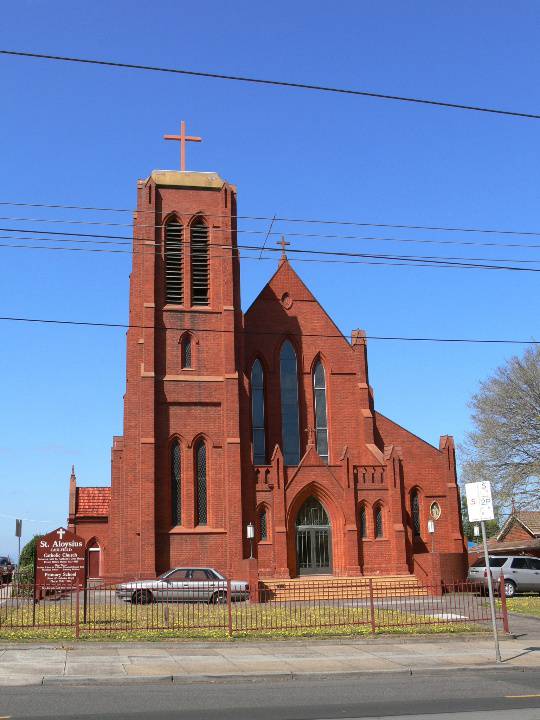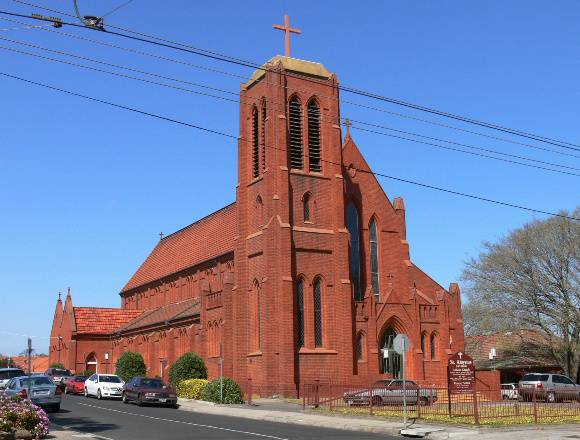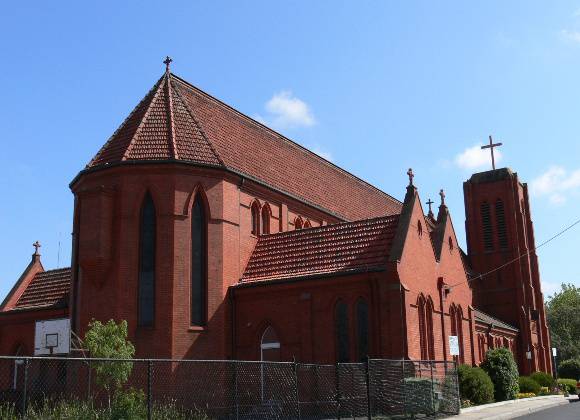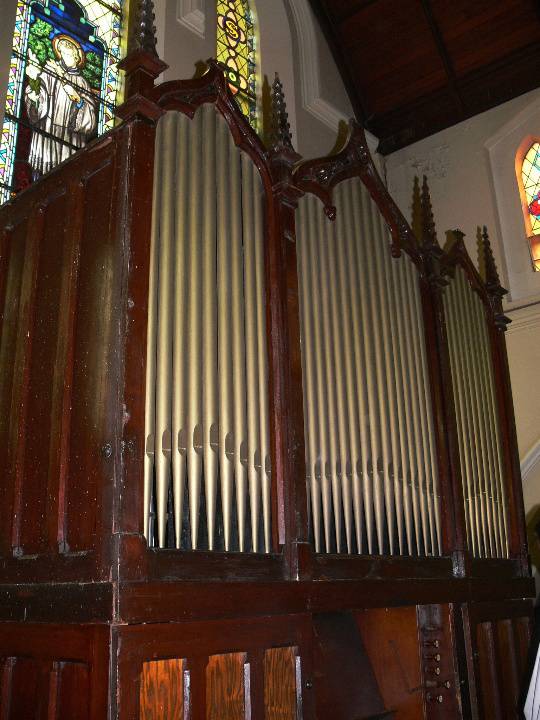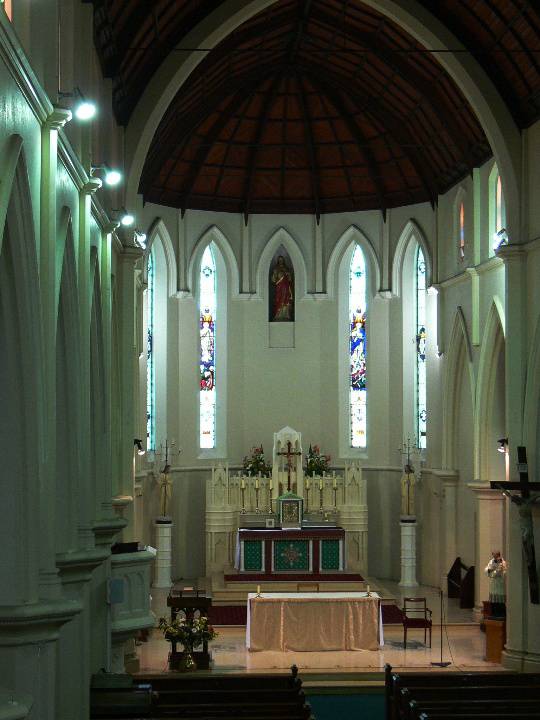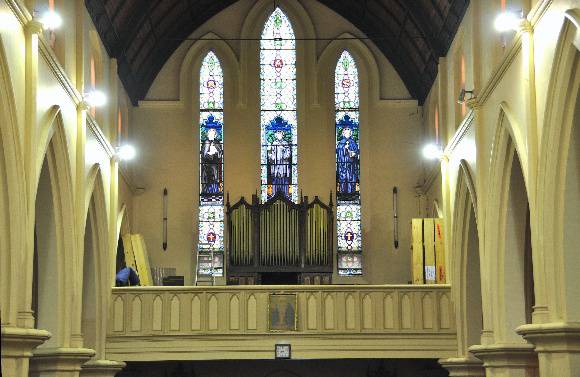| Back to search results » | Back to search page » |
|
St Aloysius' Catholic Church & J W Wolff Pipe Organ
Location233 Balaclava Road,, CAULFIELD VIC 3162 - Property No B6028
File NumberB6028LevelRegional |
|
Statement of Significance
Church Statement of Significance. An imposing brick church, designed by Bart Moriarty and opened in 1924, comprising a tall clerestoried nave with aisles, 40m tower and spire, apsidal chancel, nun's tribune and sacristies. A late manifestation of what was praised at the time as "Gothic copyism", this building is notable for its elongated proportions, the unbroken roof ridge over the nave and sanctuary ridge, and the spacious interior with Oamaru stone altars, reredos and pulpit. Organ Statement of Significance
Classified 'Regional': 09/02/1989
What is significant? The pipe organ at St Aloysius' Church is a very rare example of an organ built in South Australia by a German immigrant who became the most prolific local organbuilder in that state during the later 19th century. Johann Wilhelm Wolff built organs for many churches in Adelaide, but sadly only two of his larger instruments remain unaltered, this being one of them.
How is it significant? The organ is significant for historic, aesthetic and technical reasons at a state level.
Why is it significant? The pipe organ at St Aloysius' Church, Caulfield is significant for the following reasons:
. It is one of two surviving examples of a two-manual organ built by J.W. Wolff to remain unaltered
. Wolff was among the leading organbuilders in South Australia during the second half of the 19th century
. The instrument remains in a substantially intact state
. The overall sound is highly pleasing, in a fine acoustic, with sounds that differ from the normal English-inspired traditions that were prevalent in Australia
. The placement of the Great drawstops in a single column on the left side of the console and the Swell drawstops on the right
. The presence of the unique Suavial (harkening back to its builder's Germanic background - a type of Lieblich Gedackt) and the Salicet (a narrow scale string rank)
. The inclusion of seven ranks of splendidly made wooden pipework, mainly with inverted upper lips - a reflection of the difficulty of obtaining metal organ pipes in Adelaide at the time and in accord with German traditions
. The casework, which has three flats of (originally) gilt dummy wooden pipes placed within three flats with carved ogee Gothic canopies
. The layout of the windchests is locally unique, with the Great divided on C and C# chests on either side of the centrally placed tenor C Swell
Classified: 'State' 30/05/2011
Group
Religion
Category
Church


